
Dorado is a constellation in the southern sky. It was named in the late 16th century and is now one of the 88 modern constellations. Its name refers to the dolphinfish, which is known as dorado in Portuguese, although it has also been depicted as a swordfish. Dorado contains most of the Large Magellanic Cloud, the remainder being in the constellation Mensa. The South Ecliptic pole also lies within this constellation.

The New General Catalogue of Nebulae and Clusters of Stars is an astronomical catalogue of deep-sky objects compiled by John Louis Emil Dreyer in 1888. The NGC contains 7,840 objects, including galaxies, star clusters, emission nebulae and absorption nebulae. Dreyer published two supplements to the NGC in 1895 and 1908, known as the Index Catalogues, describing a further 5,386 astronomical objects. Thousands of these objects are best known by their NGC or IC numbers, which remain in widespread use.

NGC 6946, also known as the Fireworks Galaxy or Caldwell 12, is a face-on intermediate spiral galaxy with a small bright nucleus, whose location in the sky straddles the boundary between the northern constellations of Cepheus and Cygnus. Its distance from Earth is about 25.2 million light-years or 7.72 megaparsecs, similar to the distance of M101 in the constellation Ursa Major. Both were once considered to be part of the Local Group, but are now known to be among the dozen bright spiral galaxies near the Milky Way but beyond the confines of the Local Group. NGC 6946 lies within the Virgo Supercluster.

NGC 1512 is a barred spiral galaxy approximately 38 million light-years away from Earth in the constellation Horologium. The galaxy displays a double ring structure, with one ring around the galactic nucleus and another further out in the main disk. The galaxy hosts an extended UV disc with at least 200 clusters with recent star formation activity. NGC 1512 is a member of the Dorado Group.
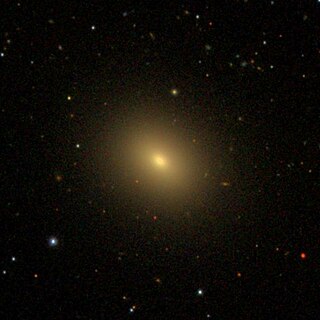
NGC 5343 is an elliptical galaxy in the constellation of Virgo. It was discovered on 5 May 1785 by William Herschel.

NGC 156 is a double star located in the Cetus constellation. It was discovered on 1882 by Ernst Wilhelm Leberecht Tempel.
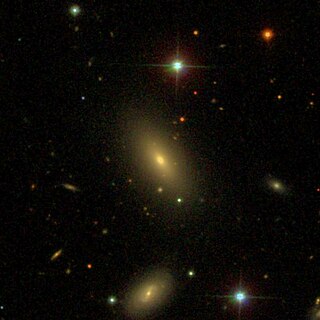
NGC 161 is a lenticular galaxy in the Cetus constellation. It was discovered on November 21, 1886, by Lewis A. Swift.

NGC 255 is a barred spiral galaxy in the constellation Cetus. It was discovered on November 27, 1785, by Frederick William Herschel.

NGC 7081 is a spiral galaxy located about 130 million light-years away in the constellation of Aquarius. NGC 7081 was discovered by astronomer William Herschel on October 10, 1790.

NGC 4754 is a barred lenticular galaxy located about 53 million light-years away in the constellation of Virgo. NGC 4754 was discovered by astronomer William Herschel on March 15, 1784. It forms a non-interacting pair with the edge-on lenticular galaxy NGC 4762. NGC 4754 is a member of the Virgo Cluster.

NGC 2029 is an emission nebula in the Dorado constellation and is part of the Large Magellanic Cloud. It is part of a complex of nebulae and stars, including NGC 2032, NGC 2035 and NGC 2040, It was discovered by James Dunlop on the 27 September 1826. Its apparent magnitude is 12.29, and its size is 2.25 arc minutes.

NGC 4492 is a spiral galaxy located about 90 million light-years away in the constellation Virgo. NGC 4492 was discovered by astronomer William Herschel on December 28, 1785. It was rediscovered by astronomer Arnold Schwassmann on January 23, 1900 and was listed as IC 3438. NGC 4492 lies in the direction of the Virgo Cluster. However, it is not considered to be a member of that cluster.
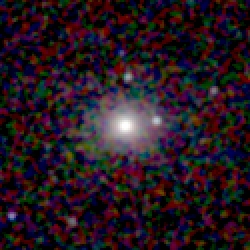
NGC 1989 is a lenticular galaxy in the Columba constellation. It is about 482 million light-years away from the Milky Way. The galaxy was discovered by John Herschel on January 28, 1835. Its apparent magnitude is 12.9 and its size is 1.40 by 1.1 arc minutes.
NGC 1986 is an open cluster which is located in the Mensa constellation which is part of the Large Magellanic Cloud. It was discovered by James Dunlop on September 27, 1826. It has an apparent magnitude of 11.31 and its size is 2.80 by 2.40 arc minutes.
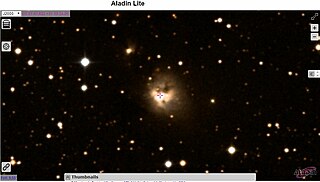
NGC 1985 is a small, bright reflection nebula located in the Auriga. It was discovered by William Herschel on December 13, 1790. It has an Apparent Magnitude of 12.8 and its size is 0.68.
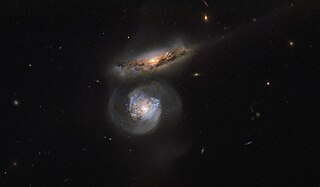
NGC 5765, also designated as MCG+01-38-004 and MCG+01-38-005, is a pair of interacting megamasers in the constellation Virgo, roughly 400,000,000 light-years (120,000,000 pc) away from Earth. NGC 5765B is active, and energy is released from the core, some of which is absorbed by a nearby cloud of water. The cloud then re-emits this energy as microwaves. These emissions were used to help redefine the Hubble constant.

NGC 497 is a barred spiral galaxy approximately 336 million light-years away from Earth in the constellation of Cetus. It was discovered by French astronomer Édouard Stephan on November 6, 1882.

NGC 3640 is an elliptical galaxy located in the constellation Leo. It is located at a distance of circa 75 million light years from Earth, which, given its apparent dimensions, means that NGC 3640 is about 90,000 light years across. It was discovered by William Herschel on February 23, 1784. It lies 2 degrees south of Sigma Leonis and is a member of the Herschel 400 Catalogue. It is condensed and can be spotted with a small telescope from suburban skies.

NGC 680 is an elliptical galaxy located in the constellation Aries. It is located at a distance of circa 120 million light years from Earth, which, given its apparent dimensions, means that NGC 680 is about 100,000 light years across. It was discovered by William Herschel on September 15, 1784.

NGC 1142 is a distorted spiral galaxy in the constellation of Cetus. It is located about 370 million light years away from Earth, which means, given its apparent dimensions, that NGC 1142 is approximately 170,000 light years across. It is a type 2 Seyfert galaxy. It interacts with the elliptical galaxy NGC 1141.



















